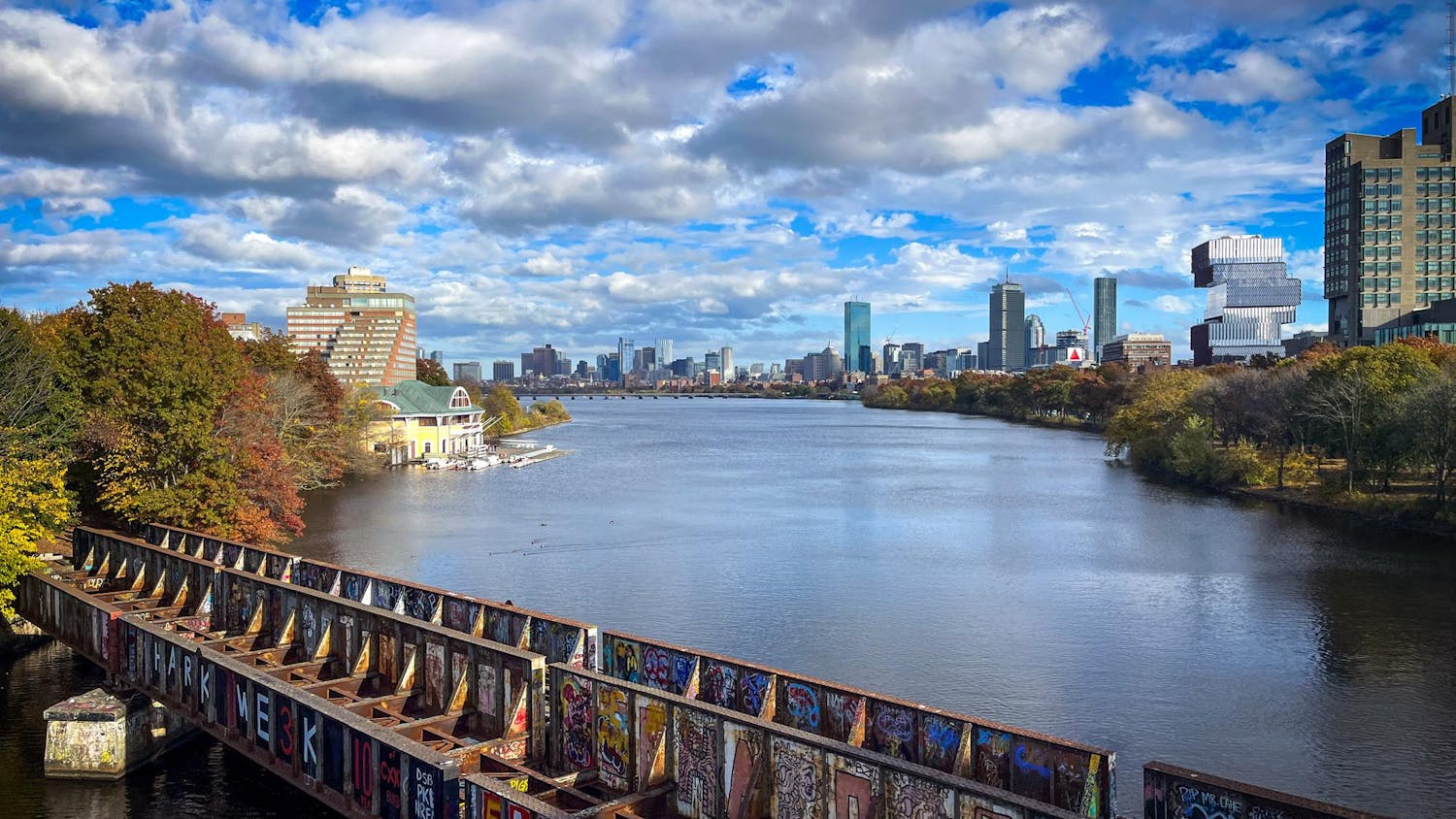In the reading room of the Cambridge Public Library, two murals face one another. The first is a triptych nestled within a curved, dome-like ceiling depicting ancient milestones in the art of printing. We see a king imprint his royal seal onto blocks of clay in Babylon, paper being woven from papyrus in Ancient Egypt and the first daily newspaper in the form of a piece of parchment in Ancient Rome. On the other side of the room, we see modern printing developments that led us to the world of literature we know today, from the invention of the first printing press around 1440 in Germany to the invention of the cylinder press in the early 1800s.
As I stared at these two murals, I thought about how much they, in turn, embody the Cambridge Public Library, a space that bridges the past with the present.
I mean that fairly literally; from their exteriors, the two buildings that form the Cambridge Public Library don’t appear to be related to one another at all. On the left is a regal yet quaint stone-brick building, its castle-esque structure seeming far more suited for the Scottish countryside than the middle of Cambridge. On the right is a wide, completely transparent building marked by lines of metal bars. It is, for all intents and purposes, a big glass box.
Inside the library, past and present meet as well. The modern wing, which comprises the majority of the library, is marked by bright lights, striking red walls and full-length glass windows that offer gorgeous views of Joan Lorentz park. The main floor is the library’s hub: an open, welcoming space filled with books, movies, music and other media. The second floor is better equipped for studying, with clusters of desks, spaces for group work and a silent study room for undeterrable focus.
Since these floors of the library are, to varying degrees, filled with sound and chatter, descending to the ground floor feels like entering a different realm entirely. The ceilings are low, the hallway is bare and the only sound is the buzz of the fluorescent lights overhead. But this floor contains a room dedicated entirely to fiction, with rows of books hidden away from the rest of the library’s lively ecosystem.
Meanwhile, more study spaces can be found in the library’s historic wing. In the reading room are long rows of tables beneath wooden arches and a beautiful, cathedral-style ceiling. Upon observation, these spaces don’t appear to have changed much from their initial inception. For instance, above the teen room is a monumental plaque bestowing the Ten Commandments that a passerby is unable to miss. This is, apparently, a remnant of the library’s original conception, in which the Commandments were placed on the library’s walls in exchange for obtaining the building from religious benefactor Frederick Hastings Rindge.
This is only one instance where perusing the Cambridge Public Library feels like entering a different point in time, depending on which floor or even which part of a floor you’re standing on. Here, the threads of time are woven together into one shared space.
So next time you’re looking for a change of scenery, ride two stops on the Red Line to Harvard station, embark on a short and scenic walk to the library and traverse its floors to get lost in entirely new worlds.






